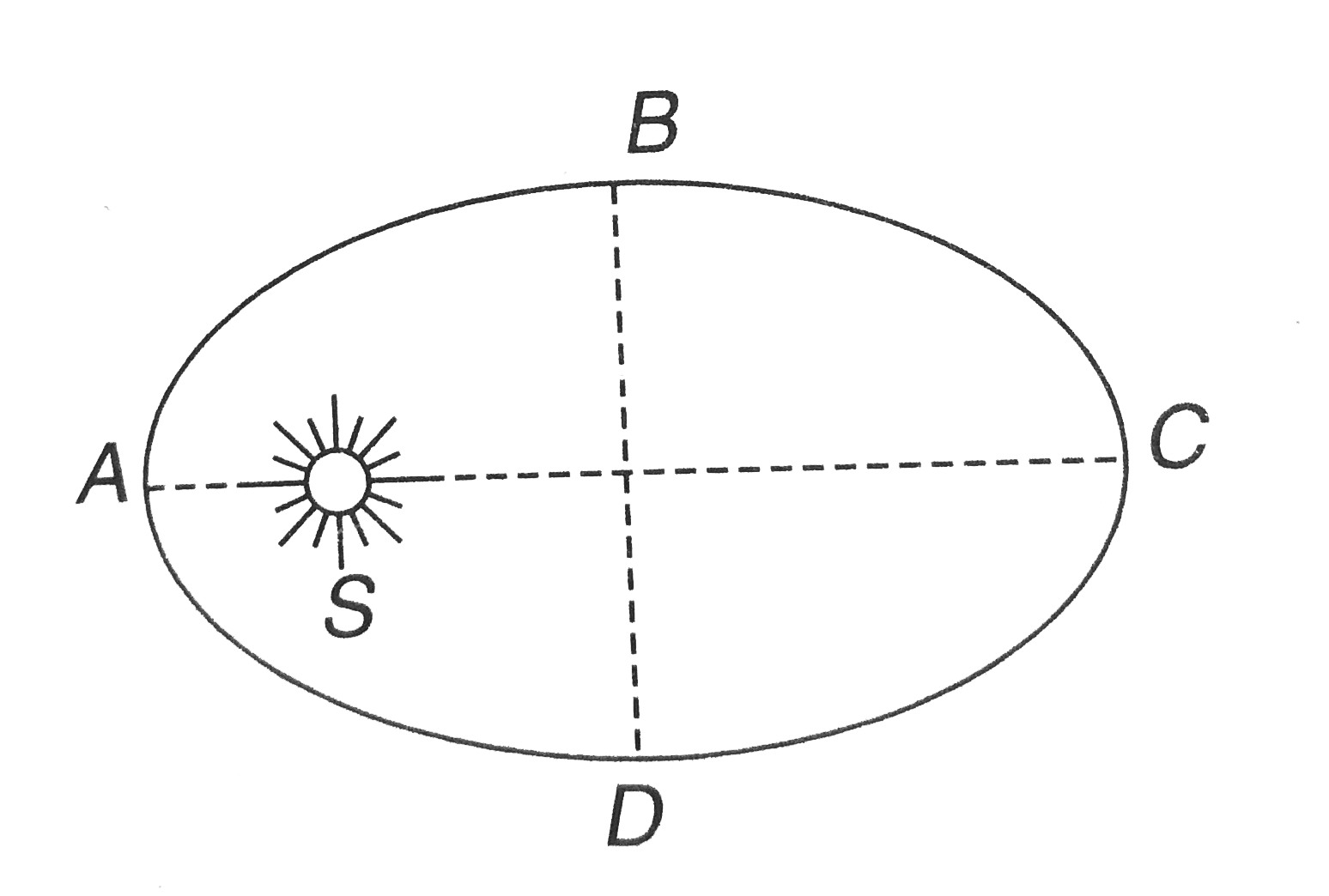A : During orbital motion of planet around the sun work done by the centripetal force is not zero at all points on the orbit .
R : Planet is revolving around the sun in elliptical orbit .
If both Assertion & Reason are true . And the reason is the correct explanation of the assertion , then mark (1)
If both Assertion & Reason are true but the reason is not the correct explanation of the assertion , then mark (2)
If Assertion is true statement but Reason is false , then mark (3)
If both Assertion and Reason are false statement , then mark (4)
The correct Answer is:A
To solve the given problem, we need to analyze the assertion (A) and the reason (R) provided in the question.
1. Understanding the Assertion (A):
- The assertion states that during the orbital motion of a planet around the sun, the work done by the centripetal force is not zero at all points on the orbit.
- In circular motion, the centripetal force does not do work because the force is always perpendicular to the displacement of the object. However, in an elliptical orbit, the distance from the sun changes as the planet moves along its path.
2. Understanding the Reason (R):
- The reason states that the planet is revolving around the sun in an elliptical orbit.
- In an elliptical orbit, the distance between the planet and the sun varies, which means the radius (r) changes as the planet moves. This variation in distance affects the work done by the centripetal force.
3. Analyzing Work Done by Centripetal Force:
- The work done (W) by a force is given by the formula:
W=F⋅d⋅cos(θ)
where F is the force, d is the displacement, and θ is the angle between the force and the displacement vector.
- In the case of centripetal force, it acts towards the center of the orbit (the sun), and the displacement of the planet is tangential to the orbit. Therefore, the angle θ is 90 degrees, making cos(90∘)=0. Hence, the work done by the centripetal force is zero in a circular orbit.
- However, in an elliptical orbit, the radius changes, which means the centripetal force does not remain constant, and thus the work done can be non-zero at different points of the orbit.
4. Conclusion:
- Since the assertion (A) is true (work done by centripetal force is not zero at all points in an elliptical orbit) and the reason (R) is also true (the orbit is elliptical), and the reason correctly explains the assertion, we conclude that both statements are true and the reason is the correct explanation of the assertion.
Final Answer:
Both A and R are true, and R is the correct explanation of A.
---
- The assertion states that during the orbital motion of a planet around the sun, the work done by the centripetal force is not zero at all points on the orbit.
- In circular motion, the centripetal force does not do work because the force is always perpendicular to the displacement of the object. However, in an elliptical orbit, the distance from the sun changes as the planet moves along its path.
- The reason states that the planet is revolving around the sun in an elliptical orbit.
- In an elliptical orbit, the distance between the planet and the sun varies, which means the radius (r) changes as the planet moves. This variation in distance affects the work done by the centripetal force.
- The work done (W) by a force is given by the formula:
W=F⋅d⋅cos(θ)
where F is the force, d is the displacement, and θ is the angle between the force and the displacement vector.
- In the case of centripetal force, it acts towards the center of the orbit (the sun), and the displacement of the planet is tangential to the orbit. Therefore, the angle θ is 90 degrees, making cos(90∘)=0. Hence, the work done by the centripetal force is zero in a circular orbit.
- However, in an elliptical orbit, the radius changes, which means the centripetal force does not remain constant, and thus the work done can be non-zero at different points of the orbit.
- Since the assertion (A) is true (work done by centripetal force is not zero at all points in an elliptical orbit) and the reason (R) is also true (the orbit is elliptical), and the reason correctly explains the assertion, we conclude that both statements are true and the reason is the correct explanation of the assertion.
Both A and R are true, and R is the correct explanation of A.
Topper's Solved these Questions
- GRAVITATION Book:AAKASH INSTITUTE ENGLISHChapter:GRAVITATION Exercise:ASSIGNMENT SECTION - C (PREVIOUS YEARS QUESTIONS)
Explore 51 Videos
- ELECTROSTATIC POTENTIAL AND CAPACITANCE Book:AAKASH INSTITUTE ENGLISHChapter:ELECTROSTATIC POTENTIAL AND CAPACITANCE Exercise:ASSIGNMENT SECTION - D
Explore 9 Videos
- KINETIC THEORYBook:AAKASH INSTITUTE ENGLISHChapter:KINETIC THEORYExercise:EXERCISE (ASSIGNMENT) SECTION - D Assertion - Reason Type Questions
Explore 10 Videos
Similar Questions
The earth revolves round the sun in an elliptical orbit. Its speed
View SolutionWhen a planet moves around the sun
View SolutionExplain the motion of a planet around the sun in a circular path?
View SolutionA planet is revolving around the sun as shown in elliptical path. The correct option is

View SolutionWhich of the following statements are correct about a planet rotating around the sun in an elleptical orbit
View SolutionDuring motion of a planet from perihelion to aphelion the work done by gravitational force of sun on it is
View SolutionIn elliptical orbit of a planet
View SolutionFollowing physical quantity is constant where a planet that revolves around Sun in an elliptical orbit.
View SolutionEarth completes one orbit around the sun is
View SolutionThe ratio of kinetic energy of a planet at perigee and apogee during its motion around the sun in eliptical orbit of ecentricity e is
View Solution